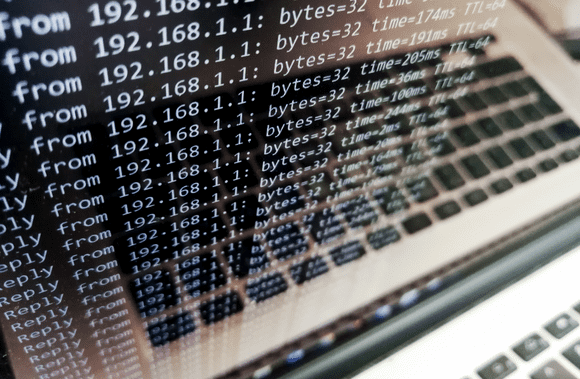You may be familiar with the CMD or Command Prompt if you have used Windows for a while. The command line interpreter known as “Command Prompt” is widely regarded as Windows’ most potent tool. By running CMD in an administrator context, you can gain access to Windows’s base features. Unfortunately, Command Prompt is often abused by cybercriminals despite its usefulness. Security experts use the command prompt to find weaknesses in systems. Consequently, this post may be helpful if you are interested in a career as a hacker or security expert and hacking with cmd.
List of 10 Best CMD Commands for hacking with cmd
This paper will go over the best hacking commands to use in hacking with cmd. Therefore, let’s take a look at the best CMD commands that can be used on computers running Windows 10.
ping – hacking with cmd
Using your Internet connection, this program will transmit data packets to the given URL and receive them back on your machine. Taking the test will reveal how long it will take to go to a given location. In layman’s terms, this lets you know if the host you’re trying to reach is still alive.
The host computer can communicate with the TCP/IP network and its resources using the Ping command.
You can ping Google’s servers by typing ping 8.8.8.8 at the command prompt.
You can replace pinging “8.8.8.8” with “www.google.com” or any other desired destination.
nslookup – hacking with cmd
It’s a command-line tool for managing networks that can convert any DNS record into an IP address. Common uses of nslookup include locating server contact information.
Imagine you know the website’s URL but need to find its IP address. For example, you may type CMD nslookup www.google.com (Replace Google.com with your website URL of which you want to find the IP address).
tracert – hacking with cmd
Trace Route is another option. Simply put, it follows an IP address to its final destination. The command figures out and displays the total length of time needed to make each connection to get to the final destination. You can use tracert x.x.x.x if you know the IP Address or tracert www.google.com if you don’t. (In the absence of the IP address being displayed).
arp
You can update the ARP cache with this command. The arp-a command can be run on each computer to check if their media access control (MAC) addresses are listed, which is required for pinging to work.
This command also allows users to determine if arp poisoning has occurred on their LAN.
In the terminal, type arp-a and see what happens.
ipconfig
This is the magic button that brings up all the helpful features. Information about your network settings, including IPv6 address, temporary IPv6 address, IPv4 address, Subnet Mask, Default gateway, and more.
At the prompt, type “ipconfig” or “ipconfig/all.”
netstat
Enter “netstat -a” at the command prompt to see which networks are connecting to your machine. All contacts will be shown, along with details on current connections and open ports.
Enter “netstat -a” at the prompt.
Route
It’s a Windows command that displays and modifies the system’s IP routing table. After entering this command, the interface, metrics, and routing table will all be seen.
The route is a popular command among hackers because it allows them to separate host routes from network routes. Simply put “route print” into the terminal to print your route.
Net View
This command displays shared resources, computers, and domains for the specified machine.
You can use Windows’ built-in Net View utility to find machines on a network that have network discovery turned on.
Type “net view x.x.x.x or computername” into the command prompt to see the remote machine.
Tasklist
At the prompt, this command initiates the full task manager. Users can type tasklist at the command prompt to get a list of all processes. You can find all mistakes with these guidelines.
The command also allows you to end any running program without warning. You can, for instance, use the following command to kill the process with PID 1532:
taskkill /PID 1532 /F
Pathping
The pathping command works similarly to tracert, but it provides more details.
The instructions take a few seconds to run since they analyze the path traversed and calculate packet loss. At the Windows command prompt, type in the following:
pathping techmaze.org
(Replace techmaze.org with the one that you want to ping)
You may learn even more; in one of our posts, we prepared a list of the most useful CMD commands. I’m looking forward to hearing what you think of the piece. Spread the word to your associates as well! Please leave a comment if there is a command we should include in the list.



